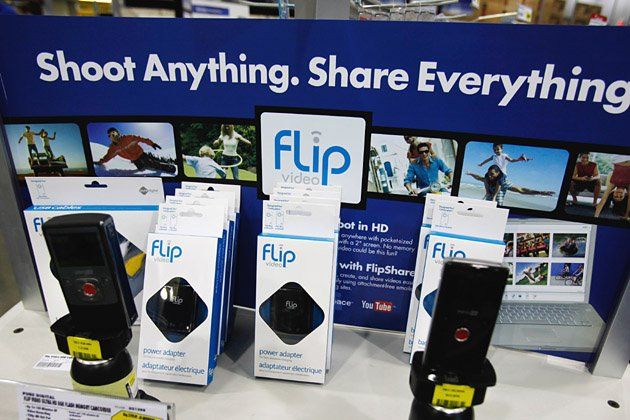
The Zi6 is slimmer and wider, with a slightly larger display. There are more significant differences in design. Even bigger differences showed up under poor lighting conditions the UltraHD's video had less picture noise and colours looked brighter, despite both camcorders using the same sized 1/4.5in CMOS sensor. We found the UltraHD dealt with very bright conditions better, as the video looked a little washed out on the Zi6. The Flip appeared a touch sharper, with slightly finer details.

In bright light, there's very little difference in picture quality between the two. We compared the results directly with Kodak's aggressively priced Zi6. There's no option to shoot SD video instead. Video is shot at a resolution of 1,280x720 and compressed using H.264 at 9Mbit/s.

This is more than enough, as the built-in 8GB of flash memory will store only around two hours of HD video. The battery lasted for well over two hours in our tests. Better still, you can fit a pair of standard AA batteries in an emergency. It comes with a rechargeable battery pack, which charges via the flip-out USB connector and keeps things nice and simple.

The controls are incredibly simple, and it has the usual built-in editing software with easy YouTube uploads. Size is a major consideration for these take-anywhere camcorders, and the UltraHD is chunkier and heavier than some we've seen, although it's still small enough to slip into a trouser pocket. It's the first Flip with an HDMI output, so you can watch your HD movies on your HD TV. This UltraHD is the latest flip model, and is essentially an HD update of the original Ultra. Flip was largely responsible for kick-starting the popularity of easy-to-use mini camcorders.īeing both pocket-sized and cheap, these can be taken almost anywhere, including environments where you wouldn't want to risk a more expensive model, such as the beach, for example.


 0 kommentar(er)
0 kommentar(er)
